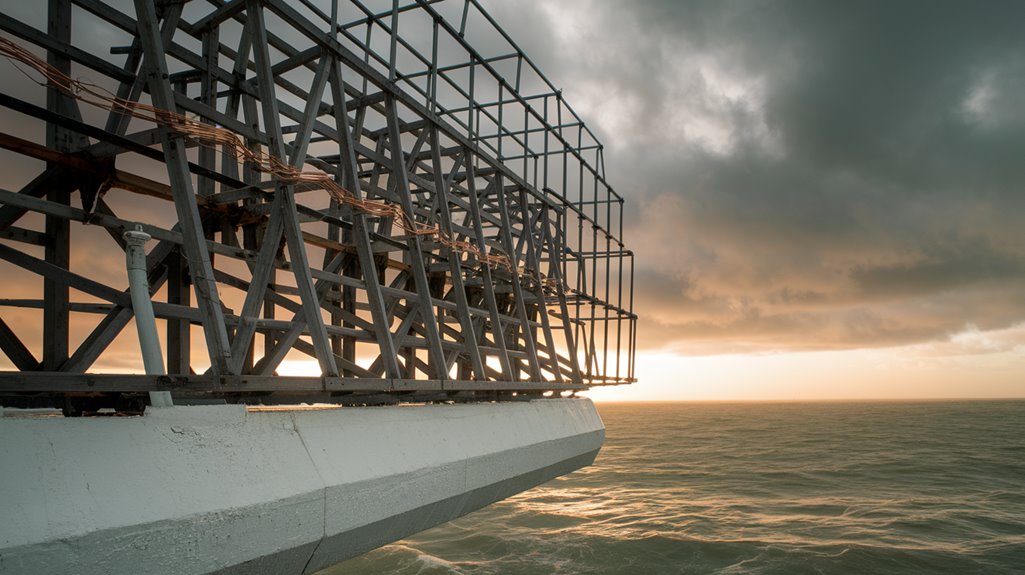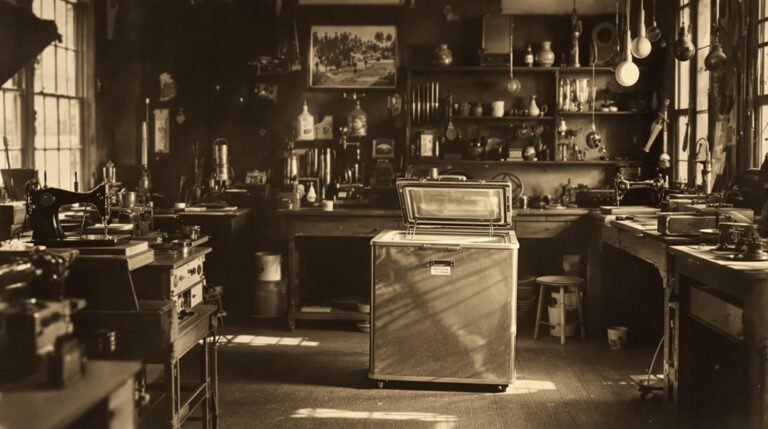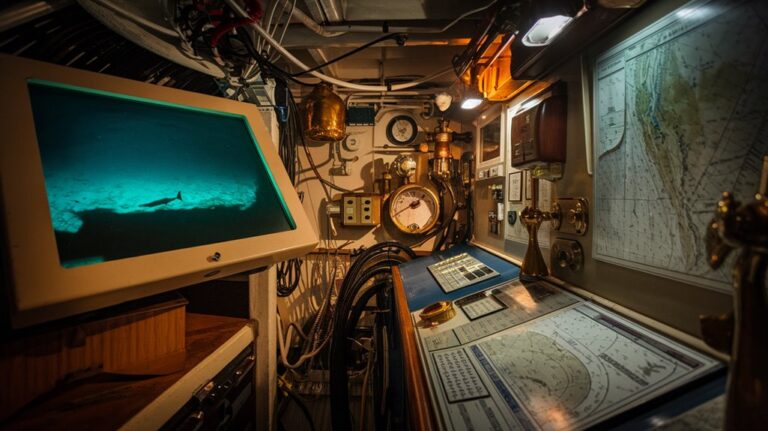Britain’s ‘Death Ray’ That Became Radar
You've probably heard tales of superweapons that could end wars in an instant, but Britain's pursuit of a "death ray" in the 1920s didn't quite go as planned. Instead, it led to something far more valuable. What began as an ambitious quest to create a beam that could stop engines and kill at a distance transformed into radar technology – a defensive innovation that would alter the course of World War II and shape modern aviation as we understand it.
The Failed Quest for a Death Ray
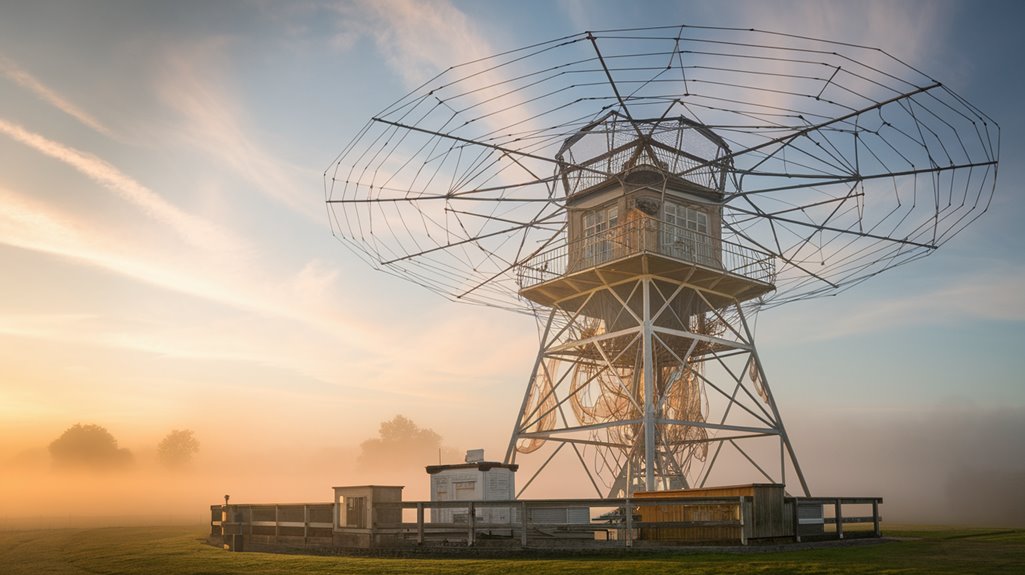
While many inventions emerge from methodical scientific research, Britain's quest for a "death ray" began with sensational claims and public spectacle.
In 1923, you'd have witnessed Harry Grindell-Matthews' bold assertions about his invention that could allegedly stop vehicles, detonate gunpowder, and down aircraft.
Despite initial interest from the British Air Ministry, Grindell Matthews' inventions faced intense scientific skepticism when he refused to demonstrate them under controlled conditions.
A failed Pathé News demonstration further damaged his credibility. The British government wasn't convinced either, leading him to seek opportunities abroad.
The Air Ministry even offered £1,000 to anyone who could create a beam capable of killing sheep from 100 yards away, but no one claimed the prize.
After returning to London in 1930, he staged a publicity stunt by projecting a light beam in the sky.
Scientists understood the fundamental physics made such a weapon impractical.
The growing threat of Nazi Germany's aircraft made finding an effective air defense system increasingly urgent.
Watson-Watt's Revolutionary Pivot
After the death ray pursuit proved fruitless, Robert Watson-Watt's expertise in tracking thunderstorms using radio waves would unexpectedly pave the way for radar's development.
When Harry Wimperis approached him in January 1935 about a potential death ray, Watson-Watt's innovations took an ingenious turn. Instead of pursuing an impossible weapon, he suggested using radio signals to detect aircraft.
This pivotal decision led to a groundbreaking demonstration in February 1935, where his team successfully tracked a Handley Page Heyford bomber using reflected BBC shortwave broadcasts.
By April, Watson-Watt had secured a patent for his radar technology. His team at Orford Ness then achieved remarkable progress, developing detection capabilities of up to 60 miles by year's end.
His early work with the British Meteorological Office during World War I had given him invaluable experience in tracking atmospheric disturbances.
This revolutionary pivot would ultimately transform Britain's air defense capabilities forever. His work would prove crucial as Chain Home system stations were operational by the start of World War II, ready to defend Britain's skies.
Birth of Chain Home Defense
Once Watson-Watt proved radar's potential in the Daventry experiment, Britain's air defense strategy underwent a dramatic transformation. The government quickly approved £60,000 to build five radar stations, marking the first step in early radar advancements that would reshape the nation's security.
You'll find the defensive technology evolution moved swiftly from there. After successful demonstrations of both bistatic continuous wave and pulse radar detection in 1935, the system expanded rapidly.
By 1938, coastal radar stations were providing continuous coverage along Britain's east coast, and when war broke out in September 1939, twenty Chain Home stations stood ready to detect incoming aircraft up to 120 miles away. This proved crucial as the integrated radar reports allowed Fighter Command to efficiently coordinate their limited 900 fighters against the Luftwaffe's superior numbers. The system's effectiveness was further enhanced when they added over one hundred CHL units to detect low-flying aircraft.
This network, costing £10 million, gave Fighter Command the vital 20-minute warning time they needed to intercept Luftwaffe attacks effectively.
The Game-Changing Cavity Magnetron
Innovation struck in 1940 when John Randall and Harry Boot at the University of Birmingham created the cavity magnetron, a groundbreaking device that generated hundreds of watts of microwave power.
This radar innovation transformed warfare capabilities with its compact size and remarkable efficiency.
The magnetron enabled the detection of smaller target objects through its advanced centimetric radar capabilities.
You'll find the magic in its design: magnetic fields and specially-sized cavities work together to produce powerful microwaves.
GEC at Wembley quickly improved the technology, pushing power outputs from 100kW in 1941 to nearly a megawatt by 1943.
James Sayers' brilliant addition of cavity strapping dramatically improved frequency stability.
This microwave technology revolutionized Allied radar systems, enabling better detection ranges and precision.
You'll see its legacy today – while modern radar often uses different devices, the cavity magnetron lives on in billions of microwave ovens worldwide.
Naval Radar Breakthroughs
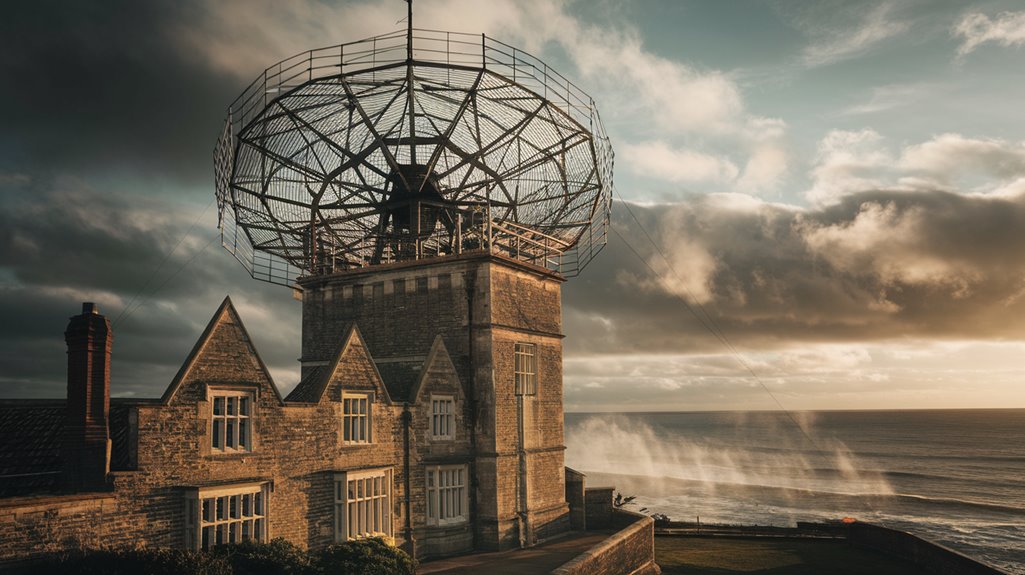
During World War II's early stages, naval radar development surged with groundbreaking systems like the Type 271, which first entered service in mid-1941. You'd find these revolutionary devices installed across various naval vessels, enhancing detection capabilities for both submarine and aircraft threats within a 13-mile range. These innovations were crucial since radar could detect enemy aircraft up to 100 miles away.
The advances didn't stop there. Naval radar systems rapidly evolved with innovations like the T-R switch and cavity magnetron integration, allowing for more compact and powerful units. The development of the single antenna duplexer at NRL marked a significant breakthrough in radar efficiency.
 death ray weapon proved impossible but led to this critical advancement.
death ray weapon proved impossible but led to this critical advancement.
The system's battle tactics were remarkably efficient. When you examine how radar information flowed through Fighter Command HQ to defense networks, you'll see why Britain could respond swiftly to incoming raids. The radar stations provided critical data about range and bearing of enemy aircraft.
The Germans' failure to target radar stations proved catastrophic to their campaign. While they'd superior prototype radar technology in 1939, they didn't grasp its strategic importance.
Britain's all-encompassing approach, combining Chain Home radar stations, ground observers, and the Filter Room's analysis, meant you could intercept enemy aircraft with precision, ultimately preserving Britain's air superiority.

